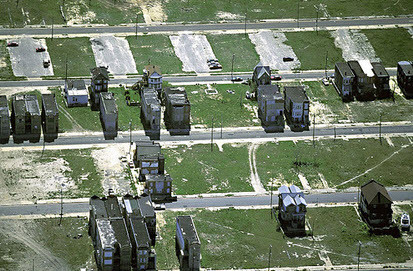In asset management we frequently discuss the balance of funding services and infrastructure. It is a balancing act that needs to be managed with caution. Many people consider that the theory is just that and then there was the City of Detroit.
Detroit declared Chapter 9 bankruptcy July 17, 2013. But this did not happen overnight; it was a long term affair.
At one time Detroit was the 5th largest city in the United States. With the support of the motor industry the city was performing well. In 1950 the population was 1.85 million but even in the late 1950’s there were signs of strain. Post Second World War there were two conflicting events that occurred:
- Suburbanisation (Urban Sprawl); and
- Deindustrialisation (Pressure from foreign competition).
The population steadily declined until 2010 when the population had dropped 60+% to 714,000. But what was really going on?
There were numerous issues that were never addressed during the population decline. They all contributed to what I will call “the sinkhole effect”. In summary:
- As the population declined, revenue declined and properties were abandoned.
- The leaders of Detroit created new taxes and failed to cut expenses.
- The leaders of Detroit also gifted workers and retirees with generous bonuses.
- They failed to cut health care benefits.
- In the 1990s the city added approximately 1,100 employees even though the population was in decline.
- Between 1998 and 2012 the state of Michigan withheld $172million from the city.
- Detroit borrowed for cash flow purposes and ended up with $18 – 20 Billion in debt with unfunded pension and health care liabilities.
- Between 1950 and 2010 revenue hovered between $1.3 Billion and $2.9 Billion settling back to $1.3 Billion in 2009.
- Debt fell from $4 Billion in 1972 to $1.4 Billion in 1985 and then exploded to $9 Billion in 2004.
- Increased taxes were introduced to increase revenue but this drove people away even more.
- The city downsized too little, too late. As revenue fell 77% the city only cut its workforce by 28%.
- Between 1985 and 2008 the city handed out $1 Billion in bonuses from the two pension funds to retirees and active city workers.
- Between 2000 and 2012 spending on retiree health care rose 46% while revenue fell 20%.
- Around 2000 to close budget holes and build infrastructure the city borrowed more than doubling debt to $8 Billion.
- Mayor Kilpatrick borrowed $1.44 Billion to restructure pension fund debt. The deal could cost $2.8 Billion over the next 22 years.
Prior to declaring bankruptcy the breakdown of the debt was approximately:
- $2.9 Billion Government debt
- $5.9 Billion Water and Sewerage department debt.
- $3.5 Billion Unfunded pension liability
- $5.7 Billion Unfunded retiree health care liability
What happened to the services and Infrastructure?
 I implore you to Google Detroit Bankrupt and search on images to see the devastation of Detroit’s infrastructure. Words could not describe what has happened to Detroit. Examples of service reduction include:
I implore you to Google Detroit Bankrupt and search on images to see the devastation of Detroit’s infrastructure. Words could not describe what has happened to Detroit. Examples of service reduction include:
- Approximately 78,000 houses empty.
- Thousands go without water as Detroit cuts service.
- Bus services reduced.
- 72 parks closed and not maintained by city.
- Average response to emergency 58 minutes.
- Only one third of ambulances were in service in first quarter of 2013.
- 40 percent of the city’s street lights were not functioning in first quarter of 2013.
- Backlog of complaints was more than 3,300 long.
- Only 8.7 percent of crimes were solved.
- 160 buses considered outdated.
- Computer systems and I.T are antiquated. Many of the systems are no longer supported with software upgrades.
- Many of the city’s parks lack regular maintenance, while needing serious repairs.
- Unacceptable long delays in court cases with backlog of fine payment.
- Many of the garbage trucks in need of repair
- Garbage pickups days late
- Reduction in bulk garbage pickup from monthly to three times a year

But did the Detroit Leaders learn anything?
In screwed news…The city of Detroit is in turmoil. That city is broke – and its residents are struggling to get by. And – Detroit retirees are facing steep pension cuts. So naturally – despite all of this despair – a compensation committee has recommended that the members of the Detroit City Council get raises. Yup – you heard that right. As you can imagine – this move isn’t going over too well with the people of the Motor City.
– Published on Youtube, 3 Apr 2015”
Could this happen again? Could another large city fall into bankruptcy? What about a country? Oh wait a minute and then there was Greece. But that’s another story.
For further details, please refer to websites below:
- http://archive.freep.com/interactive/article/20130915/NEWS01/130801004/Detroit-Bankruptcy-history-1950-debt-pension-revenue
- http://www.washingtonexaminer.com/top-10-reasons-detroit-went-bankrupt/article/2533299
- https://www.youtube.com/watch?v=BeH_1_YyJqQ (The Big Picture)
- http://www.foxnews.com/us/2013/07/16/detroit-dire-but-private-groups-citizens-keep-motor-city-running/
- http://www.wsj.com/articles/SB10001424127887324263404578614290110229034
- http://archive.freep.com/article/20140221/NEWS01/302220027/city-services-and-plan-of-adjustment


